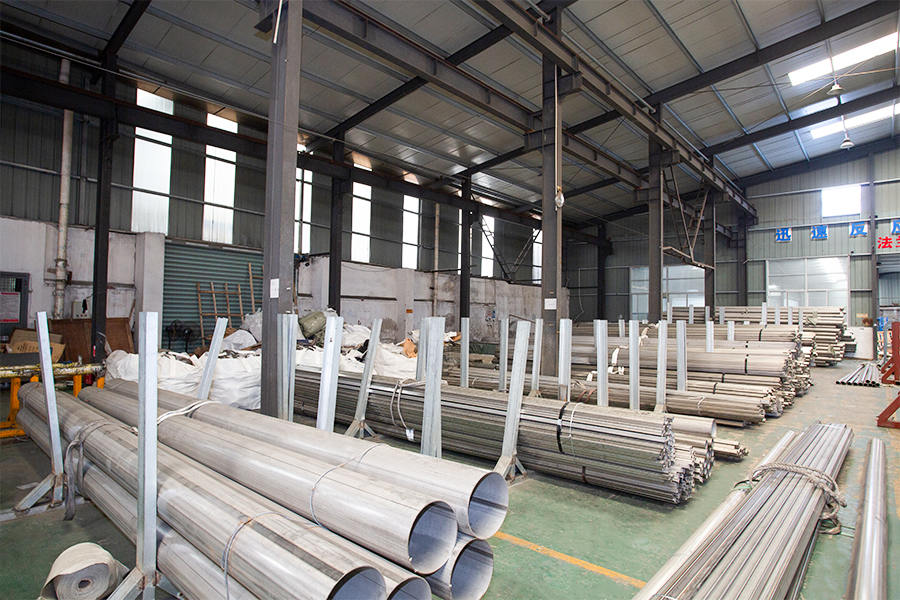Stainless steel pipes are widely recognized as one of the most reliable and durable piping solutions used across industries today. Known for their strength, corrosion resistance, and long service life, these pipes are used in sectors ranging from construction and oil & gas to food processing and medical equipment. Whether transporting fluids, gases, or supporting structural loads, stainless steel pipes offer unmatched performance under a variety of demanding conditions.
This article explores what stainless steel pipes are, their key properties, types, common applications, advantages, and considerations when selecting them for industrial or commercial use.
What Are Stainless Steel Pipes?
Stainless steel pipes are hollow, cylindrical tubes made from stainless steel—an ironbased alloy containing at least 10.5% chromium. The chromium forms a passive layer of chromium oxide on the surface, which resists corrosion and oxidation even in harsh environments. Other alloying elements such as nickel, molybdenum, and nitrogen may be added to enhance specific properties such as heat resistance, strength, or corrosion resistance in acidic conditions.
Unlike traditional steel or other metals that are prone to rusting, stainless steel maintains its structural integrity and appearance over time, making it ideal for applications where hygiene, cleanliness, and durability are essential.
Types of Stainless Steel Pipes
Stainless steel pipes come in a range of types based on manufacturing process and intended application. Some common classifications include:
Seamless Pipes: Manufactured without a welded seam, seamless pipes are made from a solid round steel billet that is heated and then pierced through to create a hollow tube. These are preferred for highpressure applications due to their strength and uniformity.
Welded Pipes: Produced by rolling stainless steel strips into a pipe shape and welding the seam. These pipes are more costeffective than seamless ones and suitable for lowerpressure applications.
ERW (Electric Resistance Welded) Pipes: A type of welded pipe made using highfrequency electric resistance to join the steel. ERW pipes are commonly used in plumbing, fencing, and gas lines.
Spiral Welded Pipes: Made by welding a spiral seam along the length of the pipe. These are often used for water transmission and structural purposes.
Stainless steel pipes are also categorized by grades such as 304, 316, 321, and 410, each with specific chemical compositions and performance characteristics.

Key Properties of Stainless Steel Pipes
1. Corrosion Resistance
Stainless steel’s resistance to rust and corrosion is one of its most valued features. It performs well in environments exposed to moisture, chemicals, and extreme temperatures.
2. High Strength and Durability
Stainless steel pipes have excellent mechanical properties. They can withstand high pressures, mechanical stress, and wear, making them suitable for longterm use in challenging conditions.
3. Hygiene and Cleanability
The nonporous, smooth surface of stainless steel inhibits the growth of bacteria, which is why these pipes are widely used in the food, pharmaceutical, and medical industries.
4. Temperature Resistance
Stainless steel maintains its strength and form even at extreme temperatures, both hot and cold, making it ideal for boiler tubes, heat exchangers, and cryogenic systems.
5. Aesthetic Appearance
Polished stainless steel pipes offer a sleek, modern look and are often used in architectural applications where appearance matters.
Common Applications of Stainless Steel Pipes
Stainless steel pipes are indispensable in many sectors, including:
Construction and Architecture: Used for structural supports, handrails, and piping systems in buildings and infrastructure.
Oil and Gas: Essential for pipelines, offshore rigs, and refineries due to their strength and corrosion resistance.
Chemical and Petrochemical Industry: Safely transports corrosive fluids and gases.
Food and Beverage Processing: Used for sanitary piping, conveying liquids and ingredients without contamination.
Pharmaceuticals: Supports cleanroom operations and sterile processing.
Water Treatment: Employed in desalination plants, water distribution, and filtration systems.
Automotive and Aerospace: Used in exhaust systems, fuel lines, and hydraulic systems for their durability and temperature tolerance.
Marine Industry: Perfect for shipbuilding and underwater applications due to resistance to saltwater corrosion.
Advantages of Using Stainless Steel Pipes
Longevity: These pipes can last decades without the need for replacement, reducing maintenance and lifecycle costs.
Recyclability: Stainless steel is 100% recyclable, making it an environmentally responsible choice.
Versatility: Available in various grades, sizes, and finishes, stainless steel pipes meet a wide array of industrial needs.
Pressure and Impact Resistance: They perform well under heavy loads and vibration.
Clean and Safe: Ideal for industries where hygiene is a top priority.
Choosing the Right Stainless Steel Pipe
When selecting stainless steel pipes for a specific project, consider the following:
Application Requirements: What type of fluids or gases will pass through the pipe? What temperatures and pressures will it endure?
Material Grade: Choose a grade that matches the chemical and mechanical demands of your environment. For example, 316 is better for marine or chemical exposure than 304.
Wall Thickness and Diameter: This affects both the strength and flow capacity of the pipe.
Standards and Certifications: Make sure the pipes comply with international standards such as ASTM, ASME, or ISO.
Working with a trusted supplier or engineer ensures that the selected piping system meets all safety and performance criteria.
Conclusion
Stainless steel pipes are the backbone of many modern infrastructure and industrial systems. Their superior resistance to corrosion, high mechanical strength, cleanability, and long service life make them one of the most reliable piping solutions available today. Whether you are designing a water purification plant, building a skyscraper, or installing a medicalgrade fluid delivery system, stainless steel pipes offer the performance, safety, and peace of mind needed for longterm success.
As industries increasingly focus on sustainability and efficiency, stainless steel piping continues to prove its value—not just as a functional material, but as a forwardthinking investment in quality and reliability.


 English
English русский
русский عربى
عربى 中文简体
中文简体
